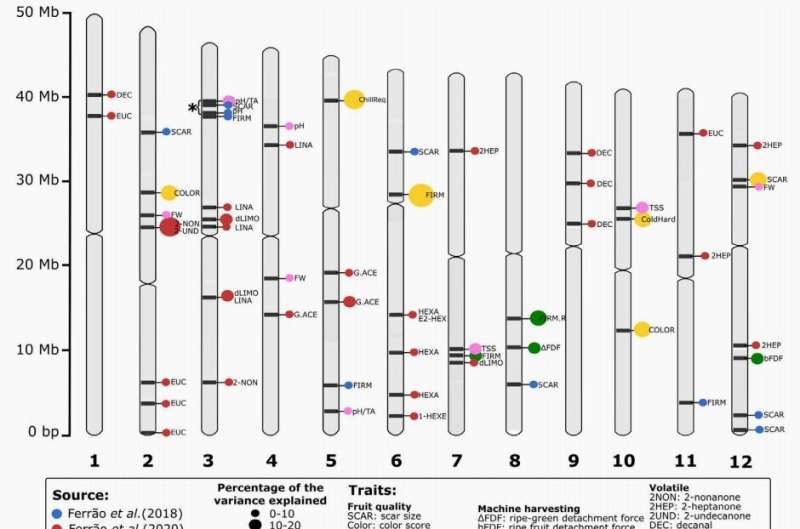Review of Vaccinium breeding research and prospects for its future directions

Recently, plant biologists from the United States and New Zealand published an article in Horticulture Research that summarizes achievements and objectives in various aspects of blueberry fruit crop research, providing valuable resources for blueberry research and drawing a useful roadmap for future studies.
The authors highlight the first high-quality chromosome-scale assemblies for blueberry, cranberry, and bilberry, which have been published over the past several years and provide an excellent set of resources for furthering our understanding of the underlying genetics of various important target traits.
Future construction of pangenomes for each of these crops will be instrumental in helping us further quantify and dissect the diversity present in wild populations and various breeding programs. Efforts are currently underway to construct pangenomes for blueberry and cranberry as part of the VacCAP project, a multi-state and multi-disciplinary project whose mission is to advance genetic resources and develop new superior blueberry and cranberry cultivars.
Several community efforts are also underway to develop new genotyping tools, which, when combined with emerging accurate and high-throughput phenotyping technologies, will help to greatly accelerate genetic discoveries and advance breeding efforts. This collection of tools and resources will allow us to construct a roadmap for introgression of beneficial target gene content from wild germplasm into breeding populations and to guide genetic engineering efforts aimed at developing new superior cultivars.
"A lot of genetic and phenotypic diversity still exists in wild populations, which could be utilized to further improve the resilience of Vaccinium crops to diverse (a)biotic stresses and various fruit quality traits. This will remain particularly important as we continue to manage production issues related to global climate change," said the authors.
More information: Patrick P Edger et al, There and back again; historical perspective and future directions for Vaccinium breeding and research studies, Horticulture Research (2022). DOI: 10.1093/hr/uhac083
Provided by Nanjing Agricultural University





















